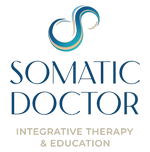Evidence-Based and Brief Psychotherapy
A concept is a brick. It can be used to build a courthouse of reason. Or it can be thrown through the window.
Gilles Deleuze
Table of Contents
Overview
Evidence-Based Practice (EBP) rigorously integrates the best in research evidence, clinical expertise, and patient values/preferences into the therapeutic process. EBP is thought of as the gold standard in the field as it is built on the foundation of how scientific psychology constructs knowledge about the mind and emotions: the double-blind control experiment. Knowledge in scientific research psychology renders methods that are objectively proven to be effective and have a stable grounding in scientific, experimental, and clinical observation.
Brief therapies are solution-focused, strategic paradigms that focus on efficiency and pragmatic results. The basic premise is that the human mind can achieve results quickly and effectively. Brief therapies operate like Occam’s Razor does in logic and the sciences: it seeks to find the simplest solution to a complex situation without multiplying tacit assumptions. Doctor Tierney has received training and/or supervision in all the following modalities which together form his integrative approach.
Mindfulness-Based Stress Reduction (MBSR)
MBSR was developed by medical doctor Jon Kabit-Zinn for calming the mind, reducing stress, and developing the capacity of the body to regulate emotions. Non-judgmental awareness in the here-and-now affords a widening of the spaces between the stimuli in life and one’s responses to it. When the widening of the space between stimulus and response occurs, freedom from habit emerges. MBSR can even reduce inflammation in the body by developing the vagus nerve- a huge nerve that calms the bodily response to stress and may have a positive correlation with psychological empathy and resilience.
Cognitive Behavioral Therapy (CBT)
Cognitive Behavioral therapy runs on the premise that it is often easier to behave your way into a new way of thinking than it is to think your way into a new way of behaving. Changes to both thinking and behaving, however, are required for lasting change. Negative core beliefs and thought distortions about yourself are excavated and eradicated in the process of CBT. Maladaptive coping behaviors are brought into a reflective process to understand their relationship with distorted thoughts about oneself and new behaviors are enacted to achieve change.
EMDR
Eye movement Desensitization and Reprocessing is an effective and efficient trauma resolution technique that gets to the root of afflictions born by relational or physical trauma. The premise is that traumatic memories are encoded in memory networks that sensitize a person toward evaluating neutral stimuli in present time as being dangerous or anxiety-provoking. Sleep Memory Theory asserts that memories are encoded during REM sleep, a process where the eyes are moving back and forth rapidly as the primary learning structure, the hippocampus, lights up and converts short term memories to long term memories. During REM sleep the brain is rapidly activating back and forth between the two hemispheres of the brain. EMDR uses back and forth brain stimulation- either by eye movements, tactile stimulation, or auditory stimuli- to enter into and desensitize the trauma memory networks so that the brain can evaluate neutral stimuli as neutral again. EMDR is also radically efficient for phobias, dissociative disorders, and the downstream effects of emotional or sexual abuse.
Motivational Interviewing
Motivational Interviewing is a results-oriented brief therapy approach whereby the interviewer (the practitioner) helps the interviewee (the client) to overcome ambivalence to change through the enhancement of motivation. The interviewer aids the interviewee in getting clear about their change process and helps them to formulate strategies, goals, and behaviors that will change their specific negative behaviors. Interviewer empathy and pragmatic motivational techniques are at the heart of Motivational Interviewing.
Brief Psychodynamic Therapy
Psychodynamic Therapy is a broad category of therapies characterized by work with the unconscious mind and have the longest standing history in psychotherapy. The premise is that the conscious mind has dynamic, complex relations with the unconscious mind and that making the unconscious more conscious will aid a person in overcoming the compulsion to repeat painful situations from the past. Psychodynamic Therapy has historically been associated with long therapeutic relationships and brief psychodynamic therapies are intended to uproot the source of the problem more efficiently.
Clinical Hypnosis
Brief therapies were significantly influenced by master clinical hypnotherapist Milton Erickson. Erickson had a knack for making clinically effective suggestions to the client while they were in a state of relaxed receptivity. It is unfortunate that clinical hypnosis generally has a negative stigma because the skillful therapeutic placement of a suggestion to the unconscious mind while the client is relaxed is tremendously effective, pragmatic, and results oriented. Clinical hypnosis contains no pomp or fluff like stage hypnosis and instead induces simple, unobtrusive relaxation states such that the defense mechanisms of the client become less hypersensitive. Due to the stigma embedded in the word “hypnosis”, it would probably be better to reframe the clinical hypnosis process as mindfulness relaxation techniques designed to empower the client with pragmatic focusing tools that change their brain (a field of theory and practice called self-directed neuroplasticity).



